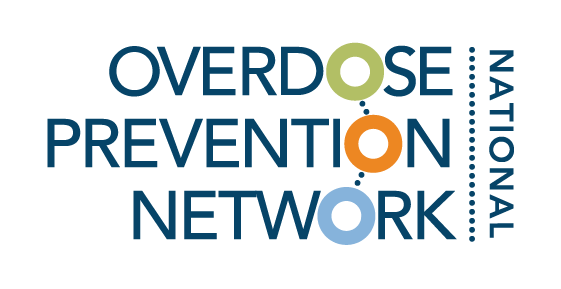
Resource Library
Toolkits, guides, and other resources vetted by experts in overdose prevention.
Filter by category and tags, or search by keyword (ex. COVID-19, harm reduction).
What is Substance Disorder?
The American Psychiatric Association’s website provides a succinct overview of substance use disorder (SUD), how its treated, the 13 priniciples of treatment, how to support a family member or friend, and related conditions.
Self-Care Strategies Worksheet
This worksheet was developed by Cypress Resilience Project in partnership with PHI Center for Health Leadership and Impact for the Spring 2022 COPN Convening, which focused on toxic stress and burnout for individuals working in substance use and overdose prevention.
Faith in Harm Reduction
Faith in Harm Reduction is a non-profit organization that fosters opportunities for the co-creation of spiritual community and relationship building in partnership with people who use drugs and other harm reduction community leaders. Through the hosting of events and a growing national network of Faith in Harm Reduction leaders who provide peer to peer support, information sharing, and spiritual care for the harm reduction movement, Faith in Harm Reduction strengthens spiritual resources for harm reduction and intersectional healing and justice movements.
End Overdose
End Overdose is a nonprofit organization based in California. They provide education materials, as well as a way to order free naloxone and fentanyl test strips on college campuses.
Stimulant Safety: Getting Amped Up to Reduce Harms When Using Stimulants
This resource from NASTAD offers education on the reasons people take stimulants, including the potential positive aspects to use and potential risks of use; how to minimize harm, reduce stigma around stimulants, and support peoples’ positive experiences.
Talking about Health Equity
Among the general public, the term equity isn’t widely understood. FrameWorks researchers have found that most people associate the term with financial topics, as in home equity or equity in a business. For communicators, this means that if you’re using the term, it’s vital to pair it with a clear explanation. Use this resource to help you with framing your message around equity.
Explaining the Social Determinants of Health
Public health experts use the term “social determinants of health” to refer to the idea that non-medical factors such as geography, income, and education have a significant effect on health. However, communications researchers have found that this term doesn’t make sense to the average person. What’s more, the phrase can even leave mistaken impressions that the “social determinants of health” has something to do with socialism or a belief that people lack free will. Use this resource to understand and help others understand the social determinants of health.
National Harm Reduction Technical Assistance Center
The National Harm Reduction Technical Assistance Center (NHRTAC) provides free help to anyone in the country providing (or planning to provide) harm reduction services to their community. This may include syringe services programs, health departments, programs providing treatment for substance use disorder, as well as prevention and recovery programs. Visit the NHRTAC to request free assistance for your program via their request form.
State-Level Guides For Community Advocates On Opioid Settlements
Christine Minhee, founder of opioidsettlementtracker.com and Vital Strategies created this encyclopedic set of guides to equip community advocates with expert-level analyses of each state’s opioid settlement spending approach. Each guide contains, key takeaways, total funds and allocations, decision-making process and mechanism, engaging in the process, tracking funds and accountability, and available resources.
Substance Use Prevention Resources for Young Adults
CDPH has compiled a webpage with resources for young adults (ages 18–25) who may use drugs. The resources explain and understand substance misuse, substance use disorder, how to talk to friends who may be struggling with substance misuse, and how to get help.
Substance Use Prevention Resources for Adult Role Models
Adult role models have an essential role on the growth and development of youth. They help guide youth to make healthy and informed decisions. Positive role models are protective social factors that promote youth health and well-being, and may reduce the risk of youth substance use, including high-risk substance use. This website has a list of resources to support adult role models communicate with youth about the risks of opioid and other substance use.
College Opioid Overdose Prevention Messaging Toolkit
The CDPH Office of Communications has developed a toolkit to college opioid overdose prevention messaging. In the toolkit are overdose prevention messaging resources and examples that supports reducing stigma to protect the lives of college students in California.
Youth Friendly Fentanyl & Opioid Overdose Prevention Toolkit
The CDPH Office of Communications has developed a toolkit to support fentanyl and opioid overdose prevention messaging. In the toolkit are overdose prevention messaging that supports reducing stigma to protect the lives of Californians.
Substance Use Prevention Communications Toolkit
The toolkit provides evidence-informed guidance for creating, delivering, and disseminating messages to prevent onset or escalation of substance use in youth aged 12-18 and build community support and readiness for substance use prevention.
SHARE: School Health Repository of Experiences March 2023: Resources to Address Youth Fentanyl Crisis
In this special edition, Safe Schools shares health and safety practices and experiences by and for California schools and local health workers to address the youth fentanyl crisis in California.
Taking Action on Racial Equity in Drug User Health Programs E-Course
This action-oriented e-course supports organizations to make racial justice and equity work part of their day to day values and practice designed specifically for organizations and providers working with people who use drugs.
Ruchika Tulshyan: Creating Purposeful Spaces of Inclusion and Belonging
In this fireside chat, Ruchika Tulshyan and Melody Barnes (Aspen Institute Forum for Community Solutions) discussed practices that can support and operationalize inclusive, equity-centered collaborative cultures. They also shared about the importance of elevating the voices of women of color and those historically underestimated within collaborative work.
Administering Naloxone Video in Spanish
The California Department of Public Health has created a video in Spanish that features information on administering naloxone.
Administering Naloxone Video in English
The California Department of Public Health has created a video in English that features information on administering naloxone.
Fentanyl Webpage in Spanish
The California Department of Public Health has created a webpage in Spanish that features information on fentanyl.












